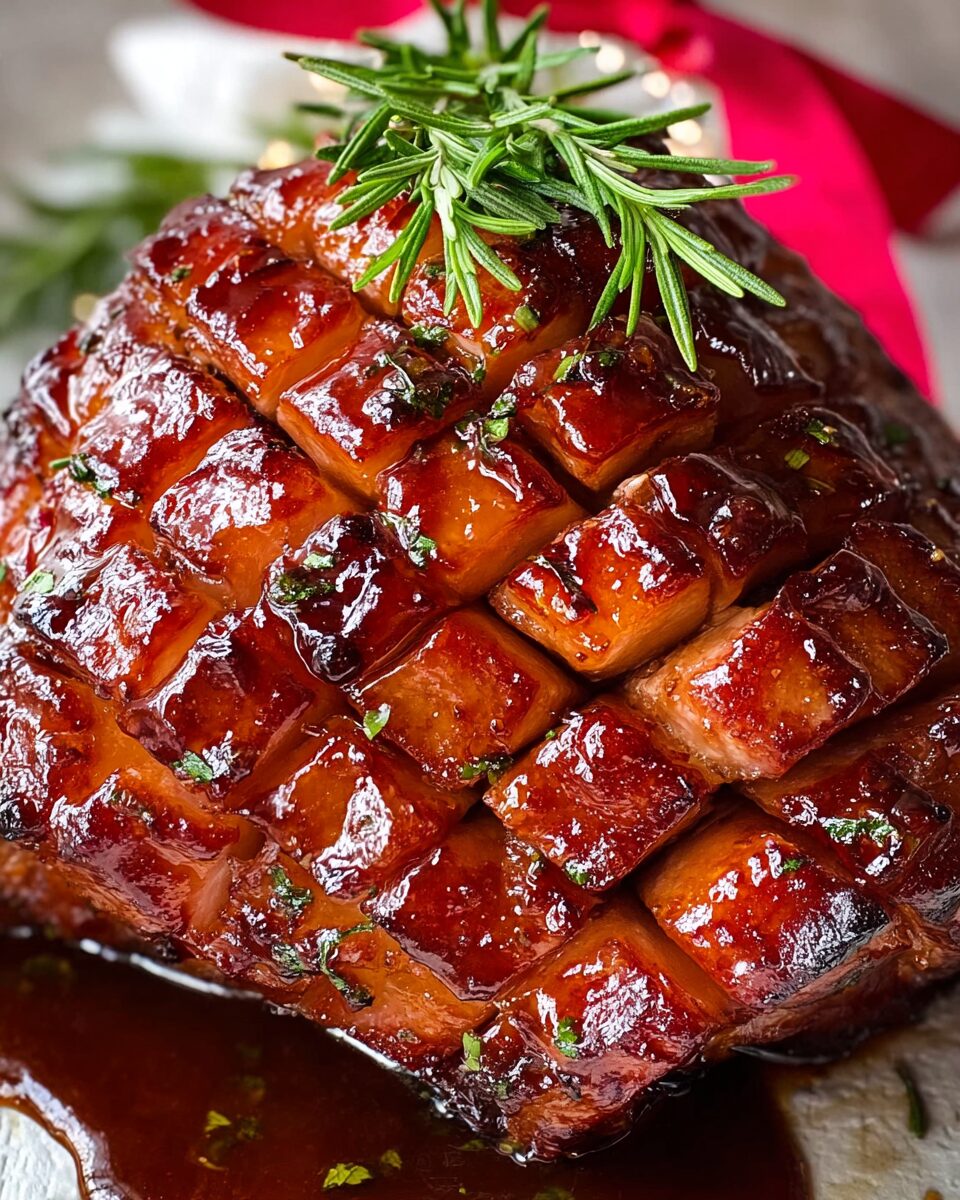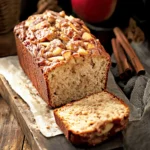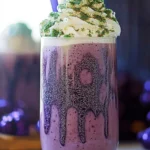The Sticky Brown Sugar and Spice Holiday Ham brings everything you want in a holiday main course—sweetness from brown sugar and honey, a tangy kick from Dijon and vinegar, and warming spices like cinnamon and allspice that evoke cozy Christmas memories. The end result is a golden, caramelized crust that’s sticky, flavorful, and utterly addictive.
Perfect for festive gatherings, this ham is easy to prepare ahead, making your holiday cooking stress-free and stunningly delicious. As a bonus, the leftovers are just as good—think sandwiches, soups, or breakfast hashes. Whether it’s your first time glazing a ham or you’re a seasoned host, this recipe ensures a jaw-dropping centerpiece with minimal effort.
Full Recipe:
-
4–6 kg (8–12 lb) bone-in ham (rind and fat on)
-
2 cups water (or dry white wine, orange juice)
Glaze:
-
3/4 cup brown sugar
-
1/4 cup honey (or maple syrup)
-
1/4 cup Dijon mustard
-
1/4 cup apple cider vinegar
-
1/2 tsp black pepper
-
3/4 tsp ground cinnamon
-
1/2 tsp allspice
-
3/4 tsp mustard powder
Directions:
-
Remove ham from the fridge 1 hour before cooking. Preheat oven to 160°C (320°F).
-
Cut around the handle of the ham and remove the rind, leaving a layer of fat. Score the fat in a diagonal pattern to create a diamond crosshatch.
-
In a saucepan, combine all glaze ingredients. Simmer over medium heat until the sugar dissolves completely.
-
Place the ham on a rack in a roasting pan. Pour water into the bottom of the pan to prevent burning.
-
Brush glaze generously all over the ham (except the handle). Bake for 1.5 hours, basting every 20 minutes. Use foil to cover any areas that brown too quickly.
-
After baking, rest the ham for 15–30 minutes and baste again with thickened pan drippings for a shiny finish.
-
Optional: Wrap the handle with parchment and ribbon, and garnish with rosemary sprigs for presentation.
Prep Time: 15 minutes | Cooking Time: 1 hour 30 minutes | Total Time: 1 hour 45 minutes
Kcal: 503 kcal | Servings: 20 servings
The Ultimate Guide to Brown Sugar Glazed Ham
If you’re looking for a holiday centerpiece that combines elegance with flavor and simplicity, look no further than the classic Brown Sugar Glazed Ham. This dish is a time-honored favorite that graces tables during Christmas, Easter, Thanksgiving, and special family gatherings. The secret behind its popularity lies in its balance of sweet, savory, and spiced elements—all wrapped in a glossy, caramelized glaze.
While it may seem like an intimidating project to some home cooks, glazing and baking a ham is surprisingly straightforward when you know a few insider techniques. In this article, we’ll dive into the background of glazed hams, what makes the brown sugar version unique, expert tips to elevate your results, and how you can adapt the dish for various occasions. By the end, you’ll feel confident serving this festive dish with flair.
A Brief History of Glazed Ham
Ham, especially the bone-in variety, has been a traditional holiday staple for centuries. Its use dates back to ancient European winter solstice feasts, long before modern refrigeration made fresh meat easily accessible year-round. Cured meats like ham were valued for their preservation qualities and rich flavor.
Glazing hams became popular in the United States during the 20th century, as sugar, molasses, honey, and fruit juices became affordable and widely available. Brown sugar glaze, with its warm sweetness and sticky finish, has since evolved into a quintessential American holiday favorite. The addition of mustard, vinegar, and spices like cinnamon or allspice balances the sweetness, giving the dish a complexity that’s hard to resist.
What Makes Brown Sugar Glaze So Irresistible?
Brown sugar is more than just a sweetener; it’s a powerhouse of deep, molasses-like flavor. When paired with acidic vinegar, tangy mustard, and a touch of honey or maple syrup, it creates a glaze that caramelizes beautifully in the oven. The glaze doesn’t just sit on the surface—it seeps into the scored fat, delivering bold flavor into every bite.
Another key factor is the spice blend. Cinnamon and allspice evoke holiday warmth and nostalgia, while black pepper and mustard powder cut through the sweetness, creating a balanced and layered profile. This glaze isn’t just sweet; it’s bold, savory, and aromatic.
The final result is a lacquered, bronzed crust that not only looks magazine-worthy but also enhances the flavor of the juicy, tender ham beneath.
Choosing the Right Ham
Not all hams are created equal. When preparing a glazed ham, choosing the right cut is essential for texture, flavor, and presentation. Here are a few points to consider:
-
Bone-in vs. Boneless: Bone-in hams are juicier and more flavorful. They also offer the iconic holiday presentation. The bone helps retain moisture during roasting, and you can save it to make soup or stock later.
-
Half Ham vs. Whole Ham: A half ham is typically sufficient for most households and easier to manage. The shank end, which includes the handle, offers traditional aesthetics and ease of carving.
-
Smoked, Pre-Cooked Ham: Most grocery store hams are pre-cooked and smoked, meaning you’re essentially reheating and glazing. This makes the process faster and more predictable.
-
Look for Quality: Avoid ultra-processed deli hams. Choose natural wood-smoked, unprocessed varieties when possible. These have a firmer texture and meatier flavor.
Secrets to a Perfect Glaze
The glaze is the heart of this recipe. While the ingredients may seem simple, the magic lies in the technique:
-
Simmer the Glaze: Make sure to heat the glaze until the sugar fully dissolves. This ensures a smooth consistency that will adhere to the ham evenly.
-
Score the Fat Layer: Creating a crosshatch pattern in the fat allows the glaze to seep in and caramelize in the crevices, resulting in more flavor and an attractive appearance.
-
Multiple Layers: Glaze in stages. Begin basting from the first moment it goes in the oven, then continue basting every 20 minutes. After the ham finishes cooking, baste one last time with the thickened pan juices for that glossy, professional finish.
-
Use Low Heat: Baking the ham at a lower temperature (around 160°C/320°F) prevents the glaze from burning and allows it to develop slowly into a sticky, amber crust.
Presentation Tips for the Holiday Table
This ham is not only a flavor powerhouse—it’s a showstopper on any holiday table. Here’s how to present it for maximum impact:
-
Wrap the Bone Handle: Use parchment or foil and tie it with kitchen twine or a festive ribbon.
-
Garnish: Tuck fresh herbs like rosemary or thyme around the ham. Add citrus slices or pomegranate seeds for a pop of color.
-
Serve with Sauce: The pan juices make a phenomenal sauce. Thin it slightly with water or juice, warm it up, and serve in a gravy boat.
Leftovers: The Gift That Keeps Giving
One of the best things about serving a glazed ham is what you can do with the leftovers. The flavor-rich meat can be incorporated into a wide range of dishes for days to come:
-
Ham and Cheese Sandwiches: Classic and delicious, especially with a smear of mustard or chutney.
-
Omelets and Quiches: Adds saltiness and depth to breakfast or brunch.
-
Ham and Potato Soup: Use the bone to create a deeply savory broth.
-
Pasta or Fried Rice: Toss diced ham into your favorite starch-based dishes.
-
Savory Bread Puddings or Stratas: Combine cubed ham with eggs, bread, and cheese for a hearty bake.
Common Mistakes and How to Avoid Them
Even with a recipe this simple, there are some pitfalls that can affect the final result:
-
Glaze Burns Quickly: Using high heat will scorch the glaze before the ham is properly warmed. Stick to a moderate temperature.
-
Skipping the Water in the Roasting Pan: Always add water or juice to prevent burning drippings and to create steam for a moist bake.
-
Under-basting: Basting not only builds up flavor but also prevents dry spots and uneven browning.
-
Removing Too Much Fat: The fat is essential for the glaze to adhere and caramelize. Trim only if necessary, but keep a 0.5 cm (1/5”) layer for best results.
Make-Ahead and Reheating Tips
A glazed ham is a perfect candidate for preparing in advance:
-
Prep Ahead: You can prepare the glaze and trim the ham up to 2 days in advance. Just wrap tightly and refrigerate.
-
Cook Ahead: Bake the ham, allow it to cool, then wrap and refrigerate. When ready to serve, reheat gently (covered) in the oven and re-baste with reserved or fresh glaze.
-
Storing Leftovers: Store slices in an airtight container for up to a week. Freeze for longer storage—up to 2 months for meat and bone.
Conclusion: Why Brown Sugar Glazed Ham Is a Must-Try Dish
The Brown Sugar Glazed Ham is more than just a recipe—it’s a symbol of celebration, warmth, and togetherness. Whether you’re hosting a large holiday dinner or a cozy family brunch, it brings a sense of tradition and indulgence to the table.
What makes this dish truly special is its versatility and visual appeal. With minimal effort and a few pantry ingredients, you can create a centerpiece that feels festive and tastes absolutely phenomenal. Plus, its make-ahead capabilities and excellent leftovers make it a cook’s dream.
So, whether you’re a seasoned holiday host or making ham for the first time, this brown sugar glaze will not disappoint. It’s the kind of recipe that becomes a cherished tradition, one slice at a time.





